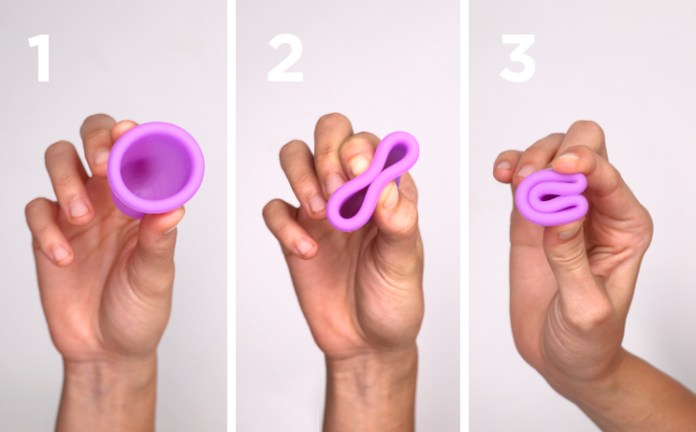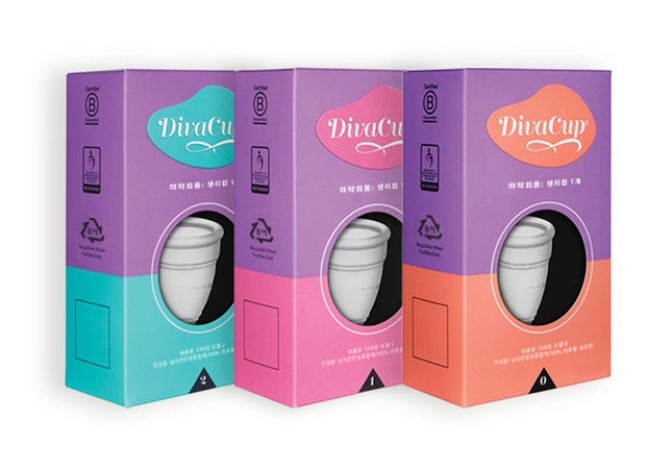Have you been to the grocery store lately? Have you seen the panic-induced lines at Costco and Walmart due to the Coronavirus?
People are stocking up on hand sanitizer and toilet paper. Tampons and sanitary napkins may be next on the list of products in short supply. If the hoarding continues the coronavirus pandemic may lead to a shortage of feminine products.
An eco-friendly option
Now is a great time to invest in an alternative feminine hygiene product called a menstrual cup. A menstrual cup is a small silicone cup gently placed inside the vagina to contain menstrual blood.
These cost-effective, environmentally friendly cups are growing in popularity. Menstrual cups are safe and reusable. One cup costs around $25–30 and can be used for up to ten years. Despite the higher upfront costs, these reusable cups save money long term. The most popular brands are the Diva Cup manufactured in Canada and the Mooncup manufactured in the UK but now also available in the US.

Patients love their cups!
I admit when I first heard about menstrual cups years ago, I found the idea a bit strange. Patients who use menstrual cups swear by them. My patients sold me on this great option. They plan to never return to traditional feminine products.
How to insert your menstrual cup
- Wash your hands.
- Apply a small amount of water or lubricant to the rim of the cup and fold as shown below
- Insert the cup rim up into the vagina.

If placed correctly, one should not feel the cup inside the vagina. If the cup feels uncomfortable, it may need a slight nudge with your finger to move it up higher in the vagina.
Lubricant is not an absolute necessity, but most patients find it helps to make insertion more comfortable. Rinse the cup off if it is dropped or falls to the floor during insertion. The five-second rule does not apply.
The cup creates a small seal collecting the menstrual blood released from the cervix. The device will pop into the proper location when inserted into the vagina. One does not have to worry about placing it correctly. Unless it is leaking or causing pain, the cup is in the right spot.
The menstrual cup should be removed and cleaned when full. It may be removed and rinsed as often as needed but should not stay in for more than twelve hours.
How to remove your menstrual cup?
- Wash your hands.
- Pinch the tip of the cup with your thumb and index finger to release the seal.
- Remove the cup and dispose of the contents into the toilet.
- Wash the cup with mild soap and warm water for reinsertion or storage.
Safer for the environment
Menstrual cups are better for our environment than traditional products. They reduce the use of nonbiodegradable feminine pads and tampons. An estimated 20 billion feminine products are used in North America each year. Discarded pads and tampons sit in landfills. The plastic and nonbiodegradable components take up 50 years to degrade.
Safer for you
Both the Mooncup and the Diva Cup are manufactured from medical grade silicon. This means no dangerous chemicals leeching into your body and if you suffer from latex allergies you can still safely use either product.
Skip the lines and try it out
Menstrual cycles are a part of life. As the Coronavirus spreads the supply chain for household products may get worse before it gets better. Avoid the lines at the grocery store. There is no need to stock up on feminine products. Order a menstrual cup and try out this eco-friendly option.

Not sure which one to buy?
Here is a side by side comparison of both products to help you decide which is more suitable.
Color
The Mooncup and the Diva cup are both available in just the one same color – semi-transparent / clear. The lack of pigmentation means that it is easier to thoroughly clean the item; it is easier to see any patches that you may have missed.
When it comes between the Mooncup vs Diva Cup on looks, they’re both very similar in terms of colour and design when placed alongside each other.
Material
Both the Mooncup and Diva Cup are made from the same material. Latex-free and hypoallergenic, each is suitable for people with sensitive skin. They are made from medical standard soft silicone, and do not contain any dyes.
Place of Manufacture
The Mooncup is manufactured in the UK and the Diva Cup is made in Canada.
Sizes
Both the Mooncup and Diva Cup are available in two sizes; small and large.
- The Mooncup size A (large) is recommended for women over the age of 30 who have had a vaginal birth. Size B (small) is for women under the age of 30 who have never given had a vaginal birth.
- The Diva Cup size 1 (small) is recommended for women under the age of 30 who have not given birth vaginally; size 2 (large) is for women over the age of 30 as well as people who have had a vaginal birth.
- The Mooncup has six suction cups, and the Diva Cup has four.
Note that the sizes are the opposite to each other, with Mooncup decreasing in size, and Diva Cup increasing in size.
Dimensions
The smaller Mooncup (size B) has a length of 71 mm and a diameter of 43 mm. The smaller Diva Cup (size 1), is slightly smaller, with a length of 70 mm and a diameter of 41 mm.
Comparing the larger menstrual cups, the Mooncup (size A) has a length of 71 mm and a diameter of 46 mm, whereas the Diva Cup (size 2) has a length of 70 mm and a diameter of 45 mm.
Again, the largest Diva Cup is slightly smaller than the Mooncup.
Capacity
Mooncup size B can hold 28.8 ml, whereas the Mooncup size A has a slightly bigger capacity of 29.3 ml. Both sizes of the DivaCup have a capacity of 30 ml.
Duration of Use
Users are advised to empty and clean the Mooncup every four to eight hours. The Diva Cup says that it can be used for longer, up to a maximum of 10 – 12 hours.
Use with IUDS
Both the Mooncup and Diva Cup state that they can be used with IUD birth control measures. Although, you should stop use and consult a doctor if you have any problems.
So…Which One?
The larger capacity of the Diva Cup might make it more preferable for ladies who have a heavy menstrual flow each month. With a shorter and smoother stem, some females might find it more difficult to remove.
The Mooncup, on the other hand, might be preferred by women who have a lower cervix because of the shorter length. The harder rim, however, may present problems for women who have sensitive bladders. The longer stem can be trimmed if necessary, and there are grips to make removal easier.
Before purchasing your menstrual cup, things to think about include whether you generally have heavy or light periods, whether your cervix is fairly high or low, and how deep and wide your vagina is.
As each type of menstrual cup has been designed to be used by any female, and they are both very similar, your ultimate decision will largely come down to personal preference.
Affiliate Links
Please note this article contains affiliate links to Amazon.



